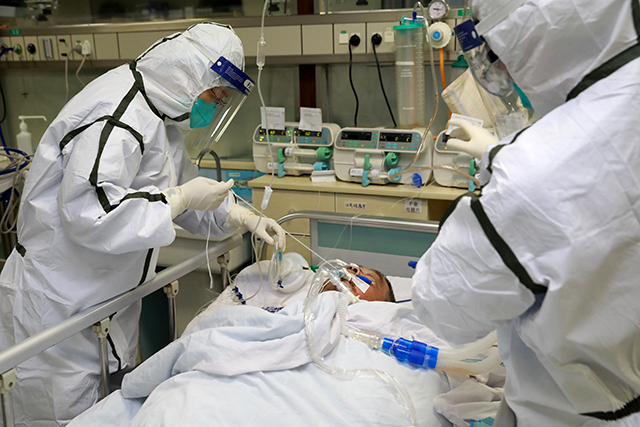On Thursday, the U.S. State Department advised no travel to China and the World Health Organization declared a public health emergency in the wake of the further spread of a new strain of coronavirus (for more information on what the virus is, here’s a primer).
As of Friday morning, more than 9,700 people were confirmed to be infected with the virus and 213 had died as a result of the virus; 187 had recovered from it. Most of the cases are concentrated in China, but numbers are increasing in other parts of the world.
The public health emergency designation wasn’t a surprise to anyone, said Michael Osterholm, the director of the Center for Infectious Disease Research and Policy at the University of Minnesota. It has less to do with alerting the public of a threat and more to do with policy: The designation has implications for the World Health Organization’s response.
Institutions in Minnesota are also responding to the coronavirus. On Thursday, the University of Minnesota sent staff an email asking members to re-evaluate any travel plans to China in the future. The Minnesota Department of Health is working on a preparedness plan, educating the public and health care providers about what to do if they suspect a case of coronavirus.
Are there any cases in Minnesota?
No. There are six documented cases in the United States, with cases in Washington, California, Arizona and Illinois. Health officials sent samples of suspected cases from Minnesota to the CDC to be tested last week, but they came back negative.
How fast is this thing moving?

[image_credit]University of Minnesota[/image_credit][image_caption]Michael Osterholm[/image_caption]
The new coronavirus is believed to have first appeared in humans in Wuhan, China, late last year. In the last seven to 10 days as it’s spread, it’s become clear the virus, is transmitting more like a flu, Osterholm said. That is to say, it’s transmitting fairly quickly. In China, one person is supposed to have transmitted the virus to 14 people.
“I have no doubt it will travel across the world, including the United States,” Osterholm said. “Just like with controlling the flu, it’s kind of like controlling the wind. You can’t.”
Health officials announced the first case of human to human transmission of the new coronavirus within the United States in Illinois Thursday. Is that cause for more concern?
That just means it’s the first case of coronavirus in somebody who had not picked up the virus in China. It’s not particularly surprising, Osterholm said.
“We expected this. We’re going to see more and more of it,” Osterholm said. More cases are being reported around the world of human-to-human transmission outside of China, and it’s widespread in China, Osterholm said.
What don’t we know yet?
A big question is how severe the virus is. In a regular flu season, 0.1 percent of people who get influenza die. It’s early, but so far, estimates suggest between 2 percent and 3 percent of people who get this coronavirus die, Osterholm said.
“That’s 20 to 30 times what we’d expect to see with a bad flu season,” he said.
Is there anything we can do?
For you and I, the CDC isn’t recommending any precautions beyond the regular regimen we should follow to avoid getting sick, especially during flu season: staying healthy by getting flu shots, using preventative measures like washing hands and taking flu antivirals if they’re prescribed.
Is there anything anyone can do?
For public health officials, there’s a lot to be done, Osterholm said: “The message really to every country in the world is get prepared.”
In China, some hospitals have run out of face masks and other protective equipment, Osterholm said.
“They’re requiring health care workers to go into work without any protection at all,” Osterholm said.
Since it’s unclear how hard coronavirus will hit in the U.S., it’s important that medical facilities here prepare, Osterholm said.
“Every health care organization in the country should be dusting off any of their plans they’ve ever had for mass infection events like this where they need to hospitalize many more patients,” Osterholm said. He worries because he’s heard from doctors that increased hospitalizations during flu seasons alone can tax hospital bed resources. If there are mass outbreaks, it’s not as though FEMA will be able to set up everywhere to add beds.
It’s not just beds that could be in short supply. Many common drugs that are acutely needed are manufactured in China, and some of them already face shortages. If China shuts down more of its manufacturing and can’t deliver drugs to the U.S., that could present further problems, Osterholm said.
“Now is the time to start,” Osterholm said of getting ready in the event of serious outbreaks here.





Depending on Chinese vaccine production is a strategic security problem. US and Allies should invest in vaccine development and vaccine production facilities that are secure from the actions of hostile governments like China and Russia. On a normal day guaranteeing Chinese manufacturers quality control is questionable. In times of crisis, China could withold vaccine, deliver adulterated, vaccine, deliver ineffective vaccine, etc.